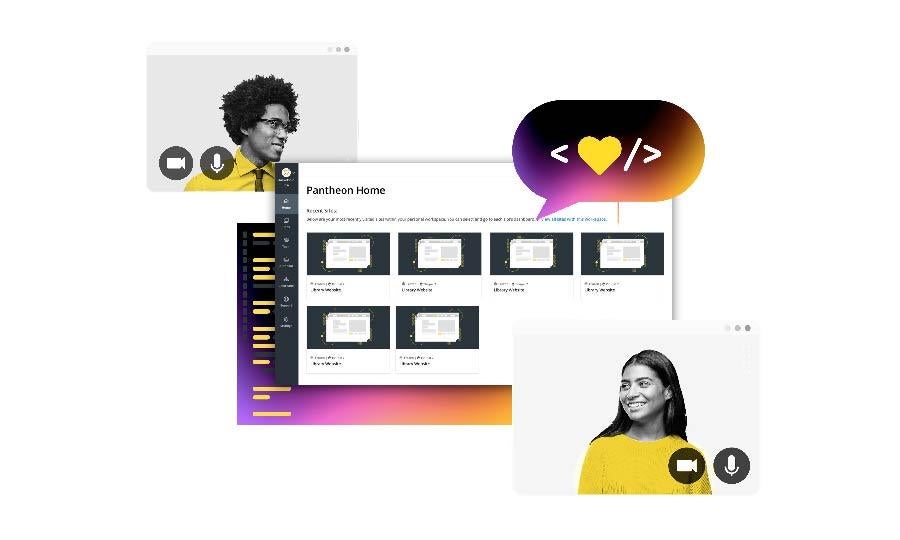Move up the Stack: Cloud Integration Tools for Drupal and WordPress Developers
Image

Today I am extremely proud to announce Pantheon’s Cloud Integration Tools suite, comprised of Quicksilver Platform Hooks, a new release of our Terminus command-line interface, a new YAML-based project configuration interface, and broad compatibility with SAML for centralized authentication.
This suite of tools enables development teams to get more value from Pantheon: automating drudge work, providing visibility into workflow operations, and ultimately supporting their own creativity and innovation. Cloud Integration Tools allow developers to move up the stack by building on top of our platform.
Here are some examples of what you can do with the Cloud Integration Tools suite today:
- Update your internal issue tracker (e.g. JIRA) based on activity on Pantheon
- Automatically sanitize Dev databases after cloning content from Live
- Post notifications to Slack of platform actions to keep your teams in sync
- Clear CDN caches on deploy
- Integrate almost anything via simple webhooks
If that’s exciting and you want to dive right in, check out the code for these use cases and more in our examples repository.
Opinionated Product or Open Platform: Pick Two
Since its inception, Pantheon’s value has been as an “opinionated product.” We use a specific stack of technologies to provide secure, high performance, highly available, elastic infrastructure on-demand. We also prescribe a specific workflow for developers to work on the CMS applications powering their websites, allowing rapid iteration and real agility while simultaneously minimizing risk.
These opinions are not up for debate, but they are also not a proprietary invention. They’ve broadly existed as software engineering and internet service best practices for decades.
What we've done is refine these practices in the context of open source CMS, based on years of experience prior to building Pantheon and distilling the combined wisdom of thousands of agency partners. By encoding the essence of this experience into a platform, we’re pushing our industry forward and supporting the emergence of open source CMS as a dominant player for websites, following in the footsteps of open source web servers.
But innovation never stops, and anyone who tries to freeze time will inevitably be left in the dust. Our most passionate users are those on the forefront of website development techniques and practices. The more we empower them to innovate, the better off we all are together.
That’s why our Cloud Integration Tools suite is such a crucial initiative.
What’s in the Suite?
Pantheon’s Cloud Integration Tools suite represents several new capabilities, as well as enhancements to existing functionality that helps realize the full potential of a cloud-integrated workflow. The major components are as follows:
- Quicksilver Platform Hooks: Quicksilver Platform Hooks let you script your workflow in the cloud, opening Pantheon to integrate with external services and infrastructure. Trigger external services, webhooks, or on-platform actions when key workflow events occur.
- The pantheon.yml Configuration File: With these new features comes the need for a new interface to manage configuration in different environments. We’ve built out support for this in a simple but powerful project configuration in the YAML language.
- Terminus Command Line Interface: Pantheon’s CLI now supports token-based authentication, allowing teams to securely use Terminus on remote servers, a must-have for Continuous Integration. Terminus also includes advanced interfaces to track workflow progress/status on Pantheon.
- SAML Centralized Authentication: Agencies, companies, and institutions that want to centrally control access to Pantheon can do so via SAML integration, the leading standard emerging in the cloud/SaaS ecosystem. This of course plays nicely with Terminus and everything else.
We Are Not Monolith Makers
Pantheon will always provide cloud-based development tools and elastic hosting, infinitely scalable and maintained 24/7/365 by a worldwide team of experts. We’ll also always provide a core set of workflows that are bulletproof and battle-tested. But we don’t harbor any illusions that we've got a monopoly on everything developers or site owners will need to succeed.
The internet is founded on a principle of “small pieces, loosely joined.” Some pieces are bigger than others, and sometimes those with a complex job are sometimes created in “monolithic” fashion (e.g. the Linux kernel), but the tools that win are those that integrate. That’s our strategy.
While we provide version control out of the box, we recognize that there are superior tools for social coding and peer review. While we provide a robust edge cache to every environment, we recognize that CDNs will always provide unique additional value. While we provide visibility and transparency into projects, we don’t see ourselves replacing tools like Slack, or your favorite issue tracking system.
Pantheon will continue adding new capabilities and services, but the only way we can keep pace with the rest of the internet is by facilitating integration. As we alleviate developers of the burden of maintaining core infrastructure, they’re able to turn their attention to tools and services close to the cutting edge. With the Cloud Integration Tools suite, we’ve laid a foundation for taking this journey together.


